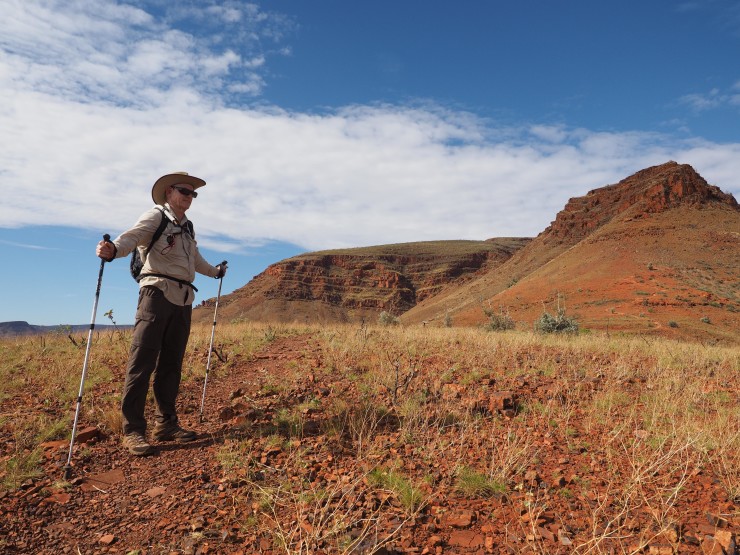5 hiking tips for beginners

5 hiking tips for beginners
Posted on
One of the best things about bushwalking is how little you need to know in order to get started.
While it’s true that bushwalking isn’t as simple as just putting one foot in front of the other, it isn’t rocket-science either.
With just a few simple tips in mind, you can easily and safely begin your bushwalking journey.
Start Small
Choosing the right trail to suit your level of fitness and experience is the most important thing when you’re starting out. Start with short, easy trails and slowly push yourself to get an idea of your fitness level. It’s good to be physically tired at the end of a hike, but you don’t want to put yourself off doing it again.
Fortunately, information on your local hiking trails should be available in abundance online these days. Your best method for finding this info will be different depending on your location, but a simple Google search should set you on the right path.
Pack wisely
These 10 Essentials have been the go-to packing list for day hikes since they first appeared in print back in 1974. They are:
1. Map
2. Compass
3. Sunglasses and sunscreen
4. Extra clothing
5. Headlamp/torch
6. First-aid supplies
7. Firestarter
8. Matches
9. Knife
10. Extra food
They may not be so important if you’re starting with well-worn tourist trails that are only a kilometre or two in length, but as you increase to half and full day bushwalks, you shouldn’t be leaving home without them.
Beyond that, though, you really don’t need a lot of gear to get started. You definitely don’t need expensive gear.
One of the most important things is to keep your feet happy. The runners you normally wear when exercising should be suitable for most short or half day trails. If you do decide to splash out on some hiking shoes or boots, make sure you wear them in well before you set off on any challenging walks.
You don’t want to be hours from your car when you discover they give you blisters.
Finally, you don’t need any fancy clothes for your hike but do think about layers, especially in cooler climates or where weather can be unpredictable. Bringing a few different layers will allow you to easily take things off as you warm up on the trail, or add extra layers if the weather changes.
Plan well before you leave home
Obviously, you’ll need to know where you’re heading and familiarise yourself with the route you intend to follow, but it’s easy to forget that your information might be out of date.
What if there’s been a bushfire or a storm and part of the trail is closed?
Make sure you check your local parks authority’s website for track closures or other relevant information before you leave home. You’ll also need to check with weather authorities for the latest updates on weather and bushfire danger.
If you’re taking on a trickier hike, you might want to hire or buy a PLB emergency beacon for peace of mind. A PLB is only to be used in a life or death situation but as unlikely as you are to need it, it will at least make you feel safer on your adventure. Not to mention the peace of mind for your loved ones back home.
The most important thing is to tell someone where you’re going. In the worst-case scenario, they will need to know the trails you intend to walk, roughly how long you might take, a description of your vehicle and where you intend to leave it.
Take your time on the trail
Some people see a bushwalk as a race. If that’s you, there’s nothing wrong with that, but I recommend slowing down and taking your time for a different experience. Slowing down will of course allow you to take in more of your surroundings, but it’s especially good for increasing your fitness gradually without feeling completely obliterated by the end of each hike.
I like to think of bushwalking as a form of meditation. I start by synchronising my stride and breathing with my heartbeat, and then try to notice the tiniest details of the landscape I’m walking through. When I do this, I finish a walk feeling calm and connected, not just like I’ve had a good workout.
Leave no Trace
If you’re keen to get started bushwalking, I’m assuming you must appreciate the beauty of the natural world that you want to start exploring. So why not make sure you leave it just as you found it?
I find it endlessly frustrating when I visit even some of the most remote places, only to find that people have left behind cigarette butts, food packaging, or even toilet paper, dirty tissues, or nappies.
Leave no Trace isn’t just about taking your rubbish with you, but a good summary is the commonly spouted phrase, “take only pictures, leave only footprints”.
We’re very lucky that we still have wild places to visit. If we keep this in mind when we hit the trail, it should be easy to show them the respect they deserve. It’s our responsibility to leave them as they are for so our children and our children’s children can experience them too.
That should be enough to get you started. As you build your fitness and experience, you’ll find that there are countless websites, social media groups and discussion forums where you can find more advice on meeting your fitness and adventure goals.
Above all, make sure you have fun. The best thing about exercising in nature is that you’re not as likely to even notice you’re exercising.
-Neil Fahey
bushwalkingblog.com.au
Guest Blogger



